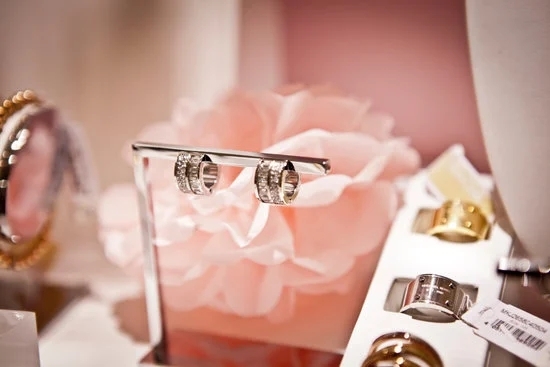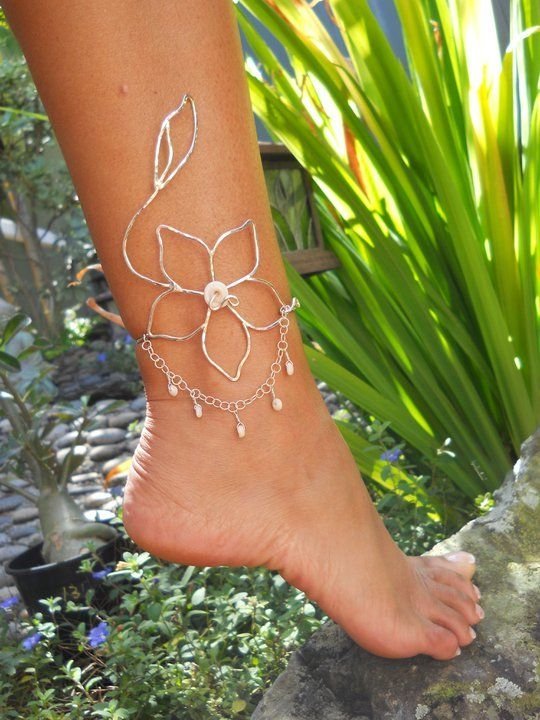What’s fine jewelry? Fine jewelry is more than just a accessory. It has a rich history, holds great value, and is revered in various cultures around the world. In this article, we will delve into the world of fine jewelry, exploring its history, distinguishing features, and the significance it holds in different societies.
Fine jewelry has been adorned by people for centuries, with its origins dating back to ancient civilizations. Its craftsmanship and timeless beauty have made it a symbol of status and elegance throughout history. From ancient Egypt to the Roman Empire, fine jewelry has played a significant role in defining cultural norms and societal roles.
What sets fine jewelry apart from other accessories? What gives it such exceptional value? These are some of the questions we will explore as we dive deeper into the world of fine jewelry.
We will also discuss the various types of fine jewelry, the materials used in creating them, and how to properly care for these precious pieces. Whether you’re a collector or someone looking to invest in fine jewelry, understanding its historical significance and cultural importance is key. Join us as we uncover the allure of fine jewelry and learn about its enduring legacy across different cultures.
What Sets Fine Jewelry Apart
The Quality of Materials
Fine jewelry is distinguished by the high-quality materials used in its creation. Unlike costume jewelry, which may be made with imitation gems and base metals, fine jewelry is crafted with precious metals such as gold, silver, and platinum, as well as genuine gemstones such as diamonds, rubies, sapphires, and emeralds. These materials not only contribute to the beauty of fine jewelry but also ensure its longevity and value.
The Craftsmanship
One of the key elements that set fine jewelry apart is the level of craftsmanship involved in its creation. Fine jewelry is meticulously crafted by skilled artisans who possess expertise in traditional jewelry-making techniques such as hand-setting gemstones, intricate metalwork, and delicate engraving. This attention to detail results in pieces that are not only visually stunning but also durable enough to be cherished for generations.
The Exclusivity
Unlike mass-produced fashion jewelry, fine jewelry often comes with a level of exclusivity. Many fine jewelry pieces are limited editions or one-of-a-kind creations, adding an element of uniqueness and rarity to each piece. This exclusivity not only adds to the allure of fine jewelry but also contributes to its value over time.
These distinguishing factors combine to make what’s fine jewelry a cherished and sought-after category in the world of accessories and adornment. Whether it’s a sparkling diamond ring or a pair of elegant pearl earrings, there’s no denying that the quality, craftsmanship, and exclusivity of fine jewelry set it apart from other types of adornments.
The Value of Fine Jewelry
Fine jewelry holds immense value, both in terms of its financial worth and sentimental significance. From heirloom pieces passed down through generations to luxury items sought after for their beauty and craftsmanship, the value of fine jewelry is multi-faceted.
Financial Value
Fine jewelry, often crafted from valuable materials such as gold, silver, diamonds, and other precious gemstones, holds significant monetary value. The rarity and quality of these materials contribute to the high price tag associated with fine jewelry. Additionally, designer or antique pieces can appreciate in value over time, making them a wise investment for those looking to diversify their assets.
Sentimental Value
Beyond its financial worth, fine jewelry also carries sentimental value. Pieces that are handed down through families come with stories and memories attached to them, making them priceless in the eyes of their owners. An engagement ring or a cherished piece gifted on a special occasion represents love, commitment, and meaningful moments in life.
Cultural Significance
In many cultures around the world, fine jewelry plays a crucial role in traditions and ceremonies. From wedding rituals to religious celebrations, the exchange of fine jewelry symbolizes respect, love, and honor. Different cultures have unique customs related to the use of fine jewelry, highlighting its deep-rooted significance across diverse societies.
Different Types of Fine Jewelry
When it comes to fine jewelry, there are various types that can be found, each with its own unique characteristics and styles. From classic pieces to more modern designs, there is something for everyone when it comes to fine jewelry. Below are some of the different types of fine jewelry that are popular among consumers:
- Rings: Rings are one of the most common types of fine jewelry and come in a variety of styles such as engagement rings, wedding bands, cocktail rings, and eternity rings.
- Necklaces: Necklaces are another popular type of fine jewelry and can range from delicate pendants to statement-making diamond necklaces.
- Earrings: Earrings come in different styles including studs, hoops, dangle earrings, and chandelier earrings, making them a versatile choice for accessorizing any outfit.
- Bracelets: Whether it’s a tennis bracelet, bangle, or cuff bracelet, the versatility of bracelets allows for endless styling options.
- Brooches: While not as common as other types of fine jewelry, brooches have been making a comeback in recent years with their unique designs and vintage appeal.
Each type of fine jewelry serves a different purpose and can be chosen based on personal style preferences or occasions. Whether it’s the timeless beauty of a diamond ring or the elegance of a gemstone necklace, the versatility and allure of fine jewelry make it a sought-after accessory for many.
Learning about the different types of fine jewelry available can also help consumers better understand what defines high-quality pieces and what sets them apart from mass-produced costume jewelry. Understanding the craftsmanship involved in creating each type of fine jewelry can also lead to a deeper appreciation for these exquisite pieces.
Popular Materials Used in Fine Jewelry
When it comes to fine jewelry, the materials used play a significant role in the overall quality and luxury of the pieces. Precious metals such as gold, silver, and platinum are among the most popular materials used in fine jewelry. Gold, in particular, is highly prized for its timeless appeal and durability. In addition to traditional yellow gold, white gold and rose gold have become increasingly popular choices for modern fine jewelry designs.
Another popular material in fine jewelry is diamonds. Known for their brilliance and rarity, diamonds are often the focal point of engagement rings, earrings, bracelets, and necklaces. Other precious gemstones commonly used in fine jewelry include sapphires, rubies, emeralds, and more recently, rare colored diamonds such as pink and blue diamonds.
Beyond traditional metals and gemstones, modern fine jewelry makers are also incorporating alternative materials into their designs. For example, titanium has gained popularity for its light weight and contemporary look. Additionally, wood, enamel, and even acrylic are being used to create unique and innovative pieces that cater to different tastes and preferences.
In a market that’s constantly evolving with new trends and styles of fine jewelry emerging regularly, it’s important for consumers to be aware of the characteristics of different materials to make informed purchasing decisions when investing in these precious items.
| Materials Used | Characteristics |
|---|---|
| Gold | Timeless appeal and durability |
| Diamonds | Brilliance and rarity |
| Titanium | Lightweight and contemporary look |
How to Care for Fine Jewelry
Fine jewelry is an investment, and caring for it properly is essential to maintain its beauty and value. Here are some tips on how to care for fine jewelry:
- Store your fine jewelry in a clean, dry place. Avoid storing multiple pieces together to prevent scratching and tangling.
- Use a soft cloth to gently wipe your jewelry after wearing to remove any oils, creams, or sweat that can cause tarnishing.
- Avoid exposing your fine jewelry to harsh chemicals, such as chlorine or bleach, which can damage the metal and gemstones.
In addition to regular care at home, it is important to have your fine jewelry professionally cleaned and inspected at least once a year. A professional jeweler can check for loose stones, worn prongs, or other signs of damage that need attention. Proper care will help ensure that your fine jewelry maintains its beauty and value for years to come.
Lastly, consider insuring your fine jewelry. Whether through a separate policy or by adding a rider onto an existing homeowners’ insurance policy, insuring your valuable pieces can provide peace of mind in case of loss, theft, or damage.
Ultimately, knowing how to properly care for fine jewelry will help you enjoy it for generations to come.
The Significance of Fine Jewelry in Different Cultures
Fine jewelry has always held a special place in various cultures around the world. From ancient civilizations to modern societies, fine jewelry has been used for different purposes and has held significant meaning across different cultures. In many cultures, fine jewelry is not only a symbol of wealth and status, but also holds sentimental value and is often passed down from generation to generation.
One of the most notable examples of the significance of fine jewelry in different cultures is the use of wedding rings. In Western culture, the exchange of wedding rings symbolizes a couple’s commitment and love for each other. In Indian culture, brides are adorned with intricate gold jewelry during their wedding ceremonies as a symbol of prosperity and happiness. In Chinese culture, jade jewelry is highly valued and considered a symbol of purity and grace.
In addition to weddings, fine jewelry plays an important role in cultural and religious traditions around the world. For example, in many Middle Eastern countries, women wear elaborate gold jewelry as part of their traditional dress for special occasions and celebrations. Similarly, the use of religious symbols in fine jewelry is common in cultures where spirituality holds great importance.
| Significance | Cultural Example |
|---|---|
| Wedding Symbolism | Exchange of wedding rings in Western culture |
| Traditional Dress | Middle Eastern women wearing elaborate gold jewelry |
| Religious Symbols | Incorporation of religious symbols in fine jewelry |
Investing in Fine Jewelry
In conclusion, fine jewelry holds a rich and fascinating history, often representing a significant part of different cultures. The artistry and craftsmanship behind each piece truly sets it apart from mass-produced jewelry, making it more valuable in terms of both monetary worth and sentimental value. Whether it’s the use of precious gemstones or the meticulous attention to detail, fine jewelry has a timeless appeal that transcends generations.
Understanding the different types of fine jewelry and the popular materials used in their creation can help consumers make informed decisions when investing in these pieces. From classic diamond rings to intricate gold necklaces, there is something for every taste and style. Additionally, knowing how to care for fine jewelry is crucial in preserving its quality and beauty for years to come.
The significance of fine jewelry in various cultures further highlights its importance as more than just an accessory. Whether it’s as a symbol of love and commitment or as a representation of wealth and status, the role of fine jewelry goes beyond mere adornment.
For those considering investing in fine jewelry, it’s essential to keep in mind important tips and considerations, from understanding market trends to working with reputable dealers. Ultimately, what’s fine jewelry is not just about its physical attributes but also about the stories, emotions, and cultural heritage that each piece carries.
Frequently Asked Questions
What Is Considered as Fine Jewelry?
Fine jewelry is typically considered to be jewelry that is made with high-quality materials, such as precious metals like gold or platinum, and genuine gemstones like diamonds, emeralds, rubies, and sapphires. It is usually designed and crafted with attention to detail and superior craftsmanship, often featuring intricate designs and settings.
How Can You Tell if Jewelry Is Fine?
You can tell if jewelry is fine by looking for certain hallmarks or stamps on the piece that indicate the purity of the metal used, such as “18K” for 18 karat gold or “PT950” for platinum. Additionally, fine jewelry will often feature high-quality gemstones that are natural and not synthetic or imitation.
The overall look and feel of the piece will also convey a sense of luxury and elegance.
What’s the Difference Between High Jewelry and Fine Jewelry?
The main difference between high jewelry and fine jewelry lies in the level of craftsmanship, design intricacy, and rarity of materials used. High jewelry is often one-of-a-kind pieces created by renowned jewelry houses using the finest quality gemstones and metals available.
These pieces are typically extremely expensive due to their exclusivity and exceptional design. On the other hand, fine jewelry encompasses a broader range of pieces that are still made with high-quality materials and craftsmanship but may not reach the same level of uniqueness or prestige as high jewelry pieces do.

Welcome to my jewelry blog! My name is Sarah and I am the owner of this blog.
I love making jewelry and sharing my creations with others.
So whether you’re someone who loves wearing jewelry yourself or simply enjoys learning about it, be sure to check out my blog for insightful posts on everything related to this exciting topic!





